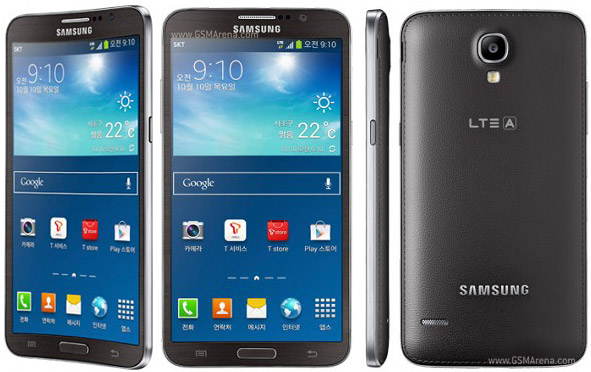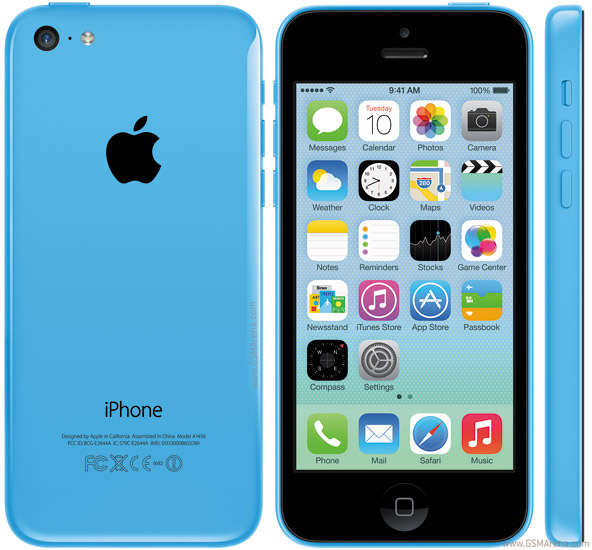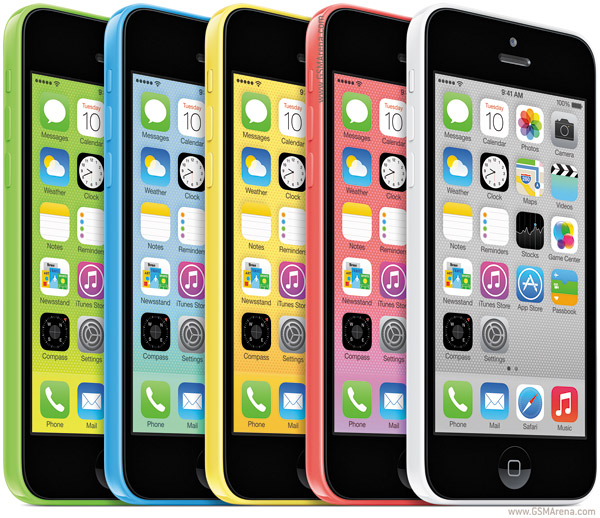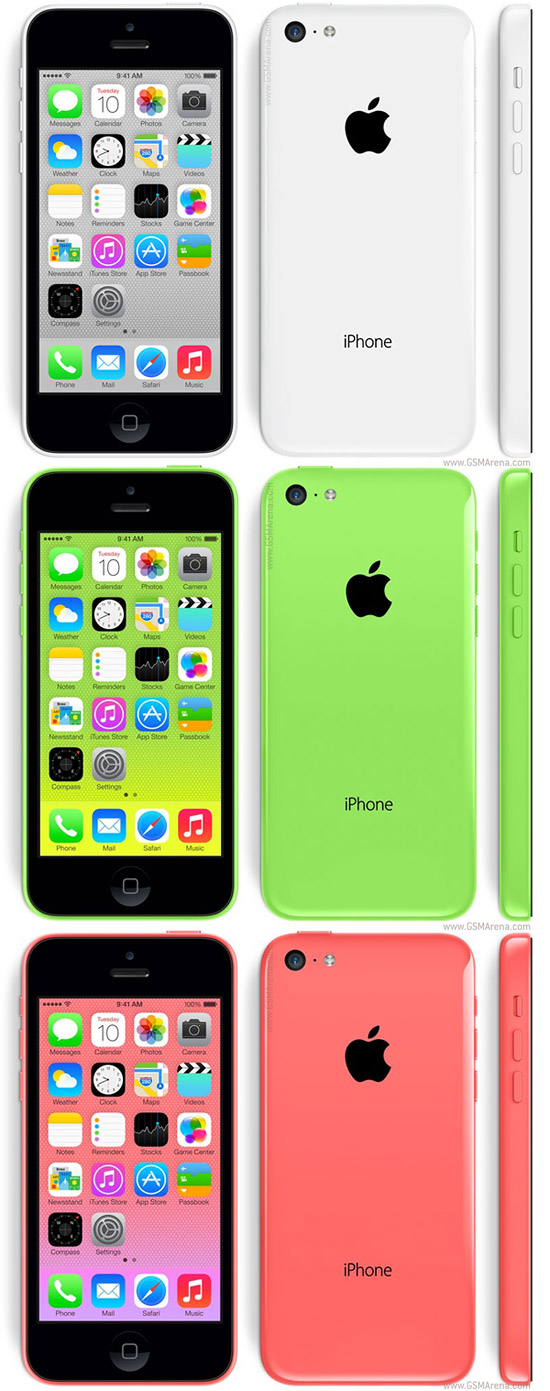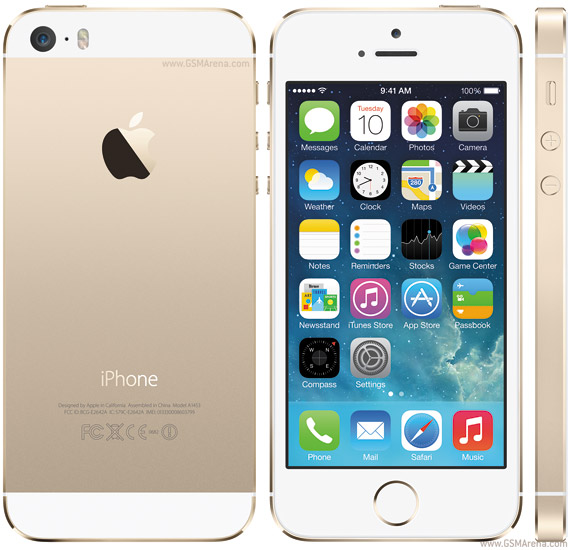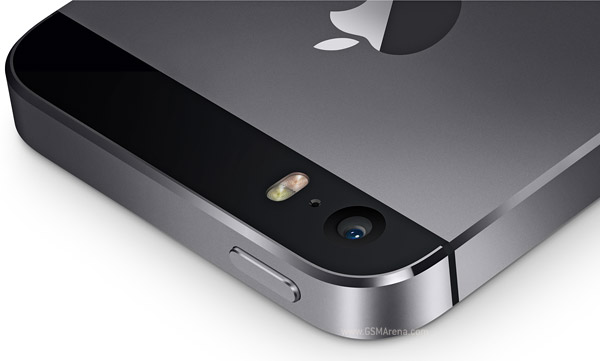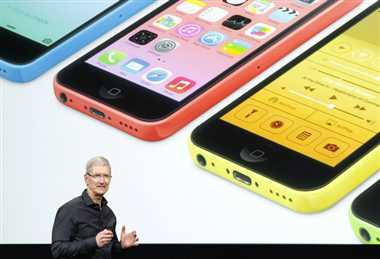Question
THE
OUTPUT OF A CURRRENT TRANSMITTER OR A PNEUMATIC
TRANSMITTER
HAS A LIVE ZERO?EXPLAIN.
Re: what is difference between 3 wire and 4 wire RTD sensor?
Answer
# 1
three
wire RTD FOR RESISTENCE COMPENSETION
FOR TWO
WIRE HAVE INTERNAL COMPENATED WITH WHISTEN BRIDGE
CIRCUIT
e: what is difference between total flow and flow rate in general
?? explain it with daily life example.
Answer
# 1
TOTAL
FLOW= AREA OF ANY CONTAINER X HIEGHT WILL BE TOAL
FLUID GOT
INTO CONTAINER
FLOW
RATE= D.V.A
WHERE D=
DIA OF PIPE
V= VELOCITY OF FLUID
A= AREA OF PIPE
Re: what happens
when the profibus fails while in operation (operation of a valve)?
Answer
# 2
when
communication failure occurs, Valve positioner have
three
different action depend on application.
1. Fail
to close
2. Fail
to open
3. Fail
to Standstill.(remain in the previous position)
Note: In
automatic closed loop system, during failure
condition;
controller must be forced back to manual mode
for safe
operation
Re: what is full
form of SMART
Answer
# 2
sequential
modulating autoranging remot transducer.
Re: what is full
form of SMART
Answer
# 6
single
mode addressable remote transducer or transmitter
Re: what is the
working principle of vortex flowmeter
Answer
# 1
vortex
shedding phenomenon
Re: What is the
processor scan time of allen bradle control logix processor 5555 lenin
lenin123us@rediff.com
Answer
# 1
It can be
seen by right clicking main task and selecting
properties
in the on line program of rslogix 5000.
Re: how to callibrate a
new i/p converter
Answer
# 1
Connect
the input air suply of around 5 to 7 Barg. Feed 4
mA
through the calibrator, the output aire pressure gauge
shal
indicate 3 psi. Feed 20mA through the calibrator, the
output
air pressure gauge shall indicate 15 psi.
Hope you are adjusting 4mA with
"Zero" screw and 20mA
with
"Span/range" screw. I feel that you might have
adjusted
the 3 psi with range screw.
i. 4mA- 0 kg/cm2 (if not Zero/0.2kg/cm2
Adjust Zero adjustment Screw)
ii. 20mA-1 kg/Cm2 (if not
1kg/cm2 Adjust Span adjustment Screw)
ok.
Re: deference between DCS and PLC including date processing and
architacture.
Answer
# 3
there is
as it is not much difference between DCS and PLC.
PLC can
be regarded as a part of a DCS. in dcs, the clock
frequency
is very high, because of which its very easy to
control
analog signals. it gives a good linearity to the
analog
signals. it has large storage space, integrated
modules
for all sorts of i/os. high processing speed.
Re: What is the meaning of
Dry contact and Wet Contact related to to sensors?
Answer
# 1
dry
contact is that the contacts are floating. One example
is the
COM, NC and NO contacts of the relays. If no voltage
is
connected to them, it is called dry contacts.
Volt-free
and dry contact mean the same thing. If a control
system
supplier offers a dry contact for you to read as a
status
bit, then he is offering to close a contact (relay
or
contact output) that is nothing more that a stand-alone
set of
contacts with no voltage, current, or anything else
impressed
across the contact set. It becomes the user's
responsibility
to determine how to sense that contact
closure.
Usually you do this by putting a voltage on one
side and
sensing the voltage on a return line from the
other
side of the contact when it closes. Once you apply
voltage
to the contacts, it becomes a wet contact.
You
"wet" the contact with a sensible voltage level.
.
Re: how manys ways
dp transmitter can be calibrated having range of -150 to 400mmwc,what side
pressure u will apply?
Answer
# 2
TWO
WAYS.WE WANT TO GIVE 150 MMWC ON THE LOWER SIDE AND
ZERO PRESSURE
ON HIGHER SIDE AND SHOULD GET THE OUT PUT OF
4 mA.AND
ZERO PRESSURE ON THE SIDE OF LOWER AND 400 mmWC ON
THE
HIGHER SIDE AND SHOULD GET THE OUT PUT OF 20mA.
IF NO
PRESSURE ON BOTH SIDES THE OUTPUT SHOULD BE 8.36 mA
(IF IT IS
A 4-20mA TRANSMITTER)
Re: what is the
diffrence between mmwc and kg/cm2 for pressure measurment when we are using
mmwc and when kg/cm2 and why????? ?? what is the reason
Answer
# 1
when we r
measuring very low pressure :: mmWC
and
measuring high pr. :: kg/cm2/bar/psi...
ok
for
example we r measuring like boiler
furnaces
pressure(draft)
i.e very low pr.(250mmWC) so we r measuring
in mmWC,
and when we r calibrating the transmitters (flow
and
level) that time also we r calling transmitters range
also mmWC
ok
here note
the point is 10,000 mmWC = 1 Kg/cm2 then
1mmwc=0.0001kg/cm2
ok
Re: WHY WE NOT USE
2-20mA,1-20mA,3-20mA or 10-50mA SIGNAL? INSTEAD OF 4-20mA.
Answer
# 2
Generally
in a transistor some amount of voltage is
required
for turning it on. This voltage is the cut in
voltage.
Up to this voltage the exists a nonlinearity in
its
characteristics. Beyond this cut in voltage the char.
of
transistor is linear. This nonlinear region lays between
0-4ma,
beyond 4ma it linear. This is why 4-20 ma range is
used.
Re: what are the different types of terminal
lugs used for wiring termination?
Answer
# 1
TYPE OF
LUGS
pin
boot
u
ring
Re: what are the different
types of terminal lugs used for wiring termination?
Answer
# 3
Generly
two type of lugs
A)
soldering type.
2)
clamping type.
Other
types depend on shap as mention
'U'type
lug.
'O' type
lug.
'pin'type
lug.
'flat'type
lug.
'bullet'type
lug.
'c'type
lug.
Re: what is meaning
of software redundency and hardware redundency?
Answer
# 1
redundancy
is the duplication of critical components of a
system
with the intention of increasing reliability of the
system,
usually in the case of a backup or fail-safe.
IF IT IS
FOR SOFTWARE THEN IT IS SOFTWARE REDUNDANCY(LIKE
BACKUP OF
DCS)
IF IT IS
FOR HARDWARE THEN IT IS HARDWARE REDUNDANCY(LIKE
COMPUTER
MONITER)
Re: what is the
difference between SCADA and DCS?
Answer
# 1
DCS-
means Distribured Control systemm.This is mainly
process
oriented system.If we ask the feedbeck from the
system,it
will give from the IO field.This is a independent
control
systen.
SCADA-means
supervisory control and data acquisition
system.This
is basically a data gathering system and given
the
control based on that datas. This system will depends
PLC or
DCS for its control.
Re: what is the difference
between SCADA and DCS?
Answer
# 2
SCADA is
basically Remote area used, and its only data
gathering
system and this system will depends on DCS for
controlling.
DCS is
independent system, and this system will get
feedback
and controlling also, SCADA can be added in DCS.
Re: Why Instrumentation Air Compressor called as
Instrumentation Air compressor?pls dont just tell its trasferring IA to all
transmitter,valves.I need exact reason, please...................... Answer
#
2
Basically in organization there diffrent pressure required
say 6kg/cm. sq. to 16 kg/cm.sq. for diffrent purpose so
utility area has configure their compressore as per
pressure required ,6kg/cm.sq pressure is the basic
requirement for control valve,actuator etc so that
compressore is called instrument air compressore which is
producig 7.0 kg./cm. sq. taking the fact in considaration
of Air savig and power saving.
Re: What is the differace between Volumatric flow
meter and Mass flow meter. Answer
#
2
Volumetric flom means its respective to the ratio for
example AC drive 0-50 hz = 0-100 ton/hr then if we select
volumetric mode if set point is 60 t/h it will rotate for
30 hz of speed irrespective of feedback what u get thats
the work proportional to set point. whereas in mass flow or
gravimetric mode it should reach the set point what u gave
irrespective of frequency it varies in between 0-50.
but in volumetric the speed is constant w.r.t to SP
Re: What is the differace between Volumatric flow
meter and Mass flow meter. Answer
#
1
Volumetric flow meter gives flow rate in terms of volume
viz liters/hr,gallon, m3/hr etc whereas mass flow meter
(coriolis) gives direct mass flwo rate viz kg/hr/tons/hr etc
Usually mass is derived by multiplying volume with product
density.
Volumetric flowmetering is affected by changes in the
temperature, pressure, density, viscosity, and flow profile
of the process fluid.
Coriolis flowmetering provides direct mass measurement that
is unaffected by changing fluid characteristics.
Re: What is the differace between Volumatric flow
meter and Mass flow meter. Answer
#
4
mass flowmeter
density= mass/volume
mass = density* volume
so it can be expressed as measurement of fluid volume and
density
the example are coroilis ,thermal flowmeter
the volumetric flow is area*velocity
so it has the various type
magnetic,vortex,turbine,ultrasonic....and positive
displacement ...
Re: How do we MEASURE OR CALCULATE VELOCITY
used to calculate REYNOLDS NUMBER?? Answer
#
2
REYNOLD NUMBER : It means rate of flow.
Re = p VD/u
Where
Re = Reynolds Number, v = Velocity of flow in m/s, d =
diameter of pipe in m, p = density of fluid in Kg / M³,, u
= Viscosity of fluid.
Turbulent or laminar flow is determined by the
dimensionless Reynolds Number.
The Reynolds number is important in analyzing any type of
flow when there is substantial velocity gradient (i.e.,
shear.) It indicates the relative significance of the
viscous effect compared to the inertia effect. The Reynolds
number is proportional to inertial force divided by viscous
force.
• laminar when Re < 2300
• transient when 2300 < Re < 4000
• turbulent when 4000 < Re
Re: Determine the manipulated variable,
controlled variable, and the measured variable given a description of various
typical industrial processes. Answer
#
2
PROCESS VARIABLE - Sensor O/P value in the form of 4-20ma
corresponds to Actual value after conditioning.(say level)
Example: Radar Lvl TX
SET VALUE - Required Process value to make the system
stable.
Example: Actual Tank lvl 100%
Required Lvl (to be maintain) 70%
MANIPULATED VARIABLE - Output Signal(4-20ma) required to
maintain the process variable near to setpoint.
Example: Control valve action to fill the tank.
Re: can u please give the exact ckt explaination
of AC Drive related to industries. Answer
#
1
It is a three phases speed controller
the variable frequency controller is used in the industry
especially on conveyors systems or rotating machines to
adjust the speed according to the flow of the production
It is a regulation of speed
Re: can u please give the exact ckt explaination of AC
Drive related to industries. Answer
#
2
AC drive speed control on basis speed=120F/P
F is frequency which is variable
Re: what do we mean by hook up drawing. what r the
information we get from it? Answer
#
1
hook-up drgs provides detialed information about how to
install an instrument in proper manner..
it also includes the details of Bill Of Materials..
It is necessary document for project engineering as well as
maintenance dpt..
Re: explain the working of Coriolis Flowmeter.
Answer
#
1
When a mass flows through a vibrating pipe, Coriolis forces
are generated which bend and twist the pipe. These very
small pipe deformations are measured by optimally mounted
sensors and electronically evaluated. Because the measured
phase shift of the sensor signals is proportional to the
mass flowrate, the Coriolis Mass Flowmeter measures the
mass flowrate in the flowmeter directly.
Re: what is the difference between SCADA and DCS?
Answer
#
1
DCS- means Distribured Control systemm.This is mainly
process oriented system.If we ask the feedbeck from the
system,it will give from the IO field.This is a independent
control systen.
SCADA-means supervisory control and data acquisition
system.This is basically a data gathering system and given
the control based on that datas. This system will depends
PLC or DCS for its control.
Re: what is the difference between SCADA and DCS? Answer
#
2
SCADA is basically Remote area used, and its only data
gathering system and this system will depends on DCS for
controlling.
DCS is independent system, and this system will get
feedback and controlling also, SCADA can be added in DCS.
Re: How can I zero check of wet leg type DP Tx ?
Answer
#
2
First isolate HP side of Tx. and open vent port of HP side.
LP Side fill service liquid up to LP tapping and set the
zero.
In this case your HP & LP both sensor working or not it was
clearly identified.
While applying span pressure on LP side in this case if HP
side sensor fails than transmitter will not work after zero
checking.
yes dear
First u knew range of transmitter then apply span at LP side
Re: which one is best profibus or RS485 for
communication? Answer
#
1
Profibus is siemens propritary protocol, where as RS 485 is
standard multidrop serial communication (it's hardware), we
have communication for RS 485 profibus available in the
market
Re: which one is best profibus or RS485 for
communication? Answer
#
2
profibus is best because its data rate is fast when fibre
profibus is used
: Convert a pressure, level, flow, or temperature process
variable value into the appropriate pneumatic or electrical value given
different types of instruments. Answer
#
2
it is a differential pressure transmitter
Re: tell me about the instrumentation,what is the actual
need of it ?what are the characteristics of a IC engineer ? Answer
#
2
instrumentation is the measurement and control of any
physical parameter that changes w.r.t time.Its need is to
control any time varying quantities in the industies.The
characteristics of the inst.engg is to predict the changes
in the parameters and control accordingly.
Re: where do you give the 4-20 ma i/p in a MIL
control valve? Answer
#
3
we give 4 to 20 ma i/p in positioner(in built
current/pressure transduser)
Re: Which softwere is required to communicate the
S7-300 processor Answer
#
1
To communicate with S-7 300, SIMATIC MANAGER software is
used, and to communicate MPI (Mulit point interface) Cord
is used...
Re: Why we use 250 ohm resistor in series with HART
protocol communication? Answer
#
8
Ohms law (V = IR) dictates that a resistor must be present
with current to receive a voltage. Most field devices
transmit HART as +/- 0.5mA imposed on the 4-20mA current
loop. The 4-20mA is the centerline of the 1mA signal. The
resistance in the loop converts the current to a voltage
which is used as a digital voltage signal. The carrier
detect is 100mV nominally. If there is no voltage, there is
no carrier, and therefore no communications.
Frequency Shift Key modulation is used to transmit the
digital HART data via the current loop. FSK allows two
separate frequencies to represent digital data. 2,200 Hz for
binary 0 and 1,200 Hz for binary 1
Re: what is the principal of flow transmeter,level
trans meter,presser transmeter? Answer
#
1
IT converts the pressure or Differential pressure into 4-
20mA DC and transmit the signal to the PLC
Re: 1.what is the role of proportional comtroller
in pid controller?2.How do u calibrate the control valve? Answer
#
2
proportional function is take place an action to maintain
the pv proportionaly to error in p.v . but an offset error
is sustained , that will be reduced by integral funtional.
calbration of control valve :::
1. check the pneumatic pressure of regulator
2. give the 4-20 ma to check the strock of c/v
3. if storck is not achieving then adjusted by zero
& span adjustement
Re: how to write the program for single push button by
using ladder diagram Answer
#
3
SIMPLE LOGIC FOR MOTOR ON AND OFF
P.B(NO) Motor
[----[ ]----------i--------------()---
[ I0.0 i Q0.0
[ i
[ P.B(NC) i
[----[\]-----( )--i
[ I0.1 Q0.0*
[
NO - Normally Open
NC - Normally Close
I0.0 - Input Address in PLC for P.B(NO) to Start the motor.
I0.1 - Stop Push Button(NC)Address.
Q0.0 - Out put adress(Motor)
* - Means the output Q0.0 is used for hold the motor ON.
Further Details - isonafar@gmail.com
Re: explain Cascade Control strategy with the help
of a block diagram. also exlain its working in a distillation column Answer
#
1
cascade control strategy is the one in which you have 2
control loops, a primary loop and a secondary loop. The
output of the secondary controller will the reference or
set point to the primary controller.
Cascade control is most advantageous on applications where
the secondary closed loop can include the major disturbance
and second order lag and the major lag is included in only
the primary loop. The secondary loop should be established
in an area where the major disturbance occurs. It is also
important that the secondary variable respond to the
disturbance. If the slave loop is controlling flow and the
disturbance is in the heat content of the fluid, obviously
the flow controller will not correct for this disturbance.
In distillation column it is used as a composition control
where the feed flow is the primary control and condense
flow out is the secondary loop
Re: what is the difference between signal
cable and ontrol cable? Answer
#
2
In signal cable only signal is given generally low current
gows through it and control cable high current passes
through it.
Re: what is the difference between signal cable and
ontrol cable? Answer
#
7
SIGNAL CABLE:-
It carry's signal(4-20mA or 0-10v)& Conductor
max. cross section is 0.75mm2 with twisted pair.
CONTROL CABLE:-
It carry's control voltage(230 / 110VAC or
110/ 24VDC))& Conductor max. cross section is 1.5mm2
Re: Describe all types and levels (4-20mA, 0-10V, mV,
pulse, etc.)of analog and digital I/O used in process control application. Answer
#
1
all types and levels are 4-20ma and 0-10mv v pule etc
because in industries somthing we assume in 0mA so the
control room is not understand outbut on the panel is not
display so any signal are come in panel and out put is
uderstand so 4ma any signal and it understand this procees
is any problem .so analo and digital I/O used in process
controle application are levels 4-20mA and 0-10v,mV
Re: how checking is done in fiber optic cable?
explain the working of RTU? Answer
#
1
Fiber optic uses signals to be transmitted in form of light.
There are certain instruments which allows us to check the
signal level of fiber optic cable. The instrument name is
OTDR.
Through which we can check the fiber optic cable.
Re: how checking is done in fiber optic cable? explain
the working of RTU? Answer
#
2
optical fiber cable is transmit the signal in form of
light,it will be measure such a instrument is OTDR .
RTU - stand for remote terminal unit . it collects all data
from the field , in field numbers of rtu is availble and
send a signal to one MTU. MTU is stand for Master Terminal
Unit which give signal to scada computer is Supervisory
Control Data Aqusition system.
Re: 1)HOW CAN CALIBRATE TEMPERATURE TRANSMITTER?
2)HOW CAN CALIBRATE FLOW TRANSMITTER? 3)HOW CAN CALIBRATE LEVEL TRANSMITTER?
Answer
#
2
1 prepare the instruments needed in calibrating temp.
transmetter.
2 unsrew the resistance input of the transmetter, and
connect it to a resistance box.
3. unsrew the output side of the transmetter, connect the
ammeter serries with the supply of 24 volts dc.
4. supply it with the resistance of 0% or 100 Ohm until
100%. and record it to the data in the as found.
5. the next is the zeroing. supply the input with 100ohm
resistance. adjust the adjustment of the zero side by
twisting slowly to the left to have an output of 4mA.
6. span- supply the transmitter with 100% depends on the
value of high temperature of the RTD value. and adjust it
to 20mA.
7 repeat it up to 4-5 times.
then supply is again with 100Ohn, mast have an output of
4mA until 100%.
record it to the data as asleft.
for 0% must have an output of 4mA, 25% 8mA, 50% 12mA, 75%
16Ma, and 20mA for 100%.
Re: how to calibrate ph meter? Answer
#
2
YOU CAN CALIBRATE IN THREE PHASE 4/7/9 PH BUFFER SOLUTION
NORMALLY WE ARE CALIBRATING WITH 4 & 9 PH BUFFER THAT MEAN
4PH--4MA/9PH--20
Re: how to calibrate ph meter? Answer
#
1
ph meters are calibrated using buffer solutins which are at
known ph levels. Make sure the probe is cleaned before
imerging it in the solutions.
Re: thermocouple output is AC OR DC?? Answer
#
1
thermocouple output is in MV which is in DC.
Re: For what Wake Frequency Calculation is used?
Answer
#
1
Thermowell
Re: what is the difference between DELTA-V &
FOUNDATION FIELD BUS Answer
#
1
delta-v it's from emerson and foundation field is fron
yokogawa so there is no diffrance infact delta-v new verson
so there some configuration is littel diffrent but
basically it is same as well as field bus.
Re: what is an ambient temperature? Answer
#
2
Ambient temperature is nothing but the atmospheric
temperature which surrounds us.Ambient temperature varies
with weather or atmospheric conditions.
Re: Why we use 4 to 20 mA, (This is International
Standard) instaed of this can we use 4-16, or 4-24 or 3- 15 or any other range
Answer
#
6
First the question is why can't we use 3~15mA or other
range, here also we can check live zero and also we can go
step current like 3,6,9,12,15(i.e 0%,25%,50%,75%,100%).ok
The reason is the transmitter voltage is 24Vdc , here we
can load max of 600 ohms, for this voltage & load better
range is 4~20.
Why 4 ~ 20 is better since we can convert easily 1~5Vdc by
put 250 ohms.All the controllers and DCS , PLCs are operated
by the input of 1~5Vdc (external or Internal convertion)
HART=higely addresaable
remote tranduer which works on high
frquency modulatition tech.
Re: Tell me about the synchronization panel. Answer
#
1
First Know the Synchronization.
We have to check 4 parameter in sequence listed below.
1. Phase Secquence.(this has to be 1 time.basicly this is
the rotation of the phase.)
2.Voltage has to be equal.(but in practical case votlage
difference not more than 2%)
3.Frequency has to be equal .(but in practical case
Frequency difference not more than 2%)
4.Phase angel difference must be zero(but in practical case
phase angel difference not more than 7*)
so we required in Synchronization Panel.
2 volt meter,2 frequency meter,Phase angel check Relay(CSQ)
in case you dont have the csq you can use the dark lamp
mathod.
Re: WHY WE NOT USE 2-20mA,1-20mA,3-20mA or 10-50mA
SIGNAL? INSTEAD OF 4-20mA. Answer
#
2
Generally in a transistor some amount of voltage is
required for turning it on. This voltage is the cut in
voltage. Up to this voltage the exists a nonlinearity in
its characteristics. Beyond this cut in voltage the char.
of transistor is linear. This nonlinear region lays between
0-4ma, beyond 4ma it linear. This is why 4-20 ma range is
used.
Re: What is the Difference between E/P Positioner
and I/P positioner in a control valve? In which applications the respective
positioners are used in? Answer
#
1
My understanding that the IP positioner would be that you
are using a current signal (I) and converting it to a
pressure signal (P) in order to operate a positioner valve.
I would call the signal conditioner in this case an I to P
converter.
I am not so sure about EP, but E can be used to mean EMF
which is measured in volts and so could ve voltage to
pressure signal conditioner in the same way as I to P in
the example above.
Re: Which instrument used to calibrate the
pressure switch? Answer
#
2
pressure calibrator or dead weight tester
Re: I want to measure bidirectional steam flow?
Kindly suggest me a suitable flow meter. steam is superheated at 41kg/cm2,
350°C Answer
#
1
bi-directional Averaging Pitot Tube,Transit Time Ultrasonic
Flow Meters.
Re: what is meant by calibration Answer
#
1
the process of measuring the response of an instrument to a particular input and correcting the response to a predetermined value and repeating this in increasing and decreasing orders throughout the range of the physical parameter to be measured is called calibration.
Re: 1. How many output signals do wew have in
process control? 2. Could you write down the names of the pre-commissioning and
commissioning stage test instruments and explain them (more than 5 items)? 3.
What is the first step to commission a transmitter on service? 4. What is RTD?
5. Find the output value in MA of a temperature transmitter (RTD Type) at
120degree celius? 6. What is the O/P signal of a pneumatic transmitter? 7. What
is the O/P signal of an elctronic transmitter? 8. What is the close loop and
open loon? Answer
#
1
1. Two output signals are used in process control -
analogue and digital.
2. RTD - Resistance Temperature Detector for temperature
measurement upto 600°C.
3. O/P signal for pneumatic transmitter is pneumatic signal
3 - 15 psi
4. O/P signal for electronic transmitter is electrical
signal 4 - 20 mA, 1 - 5 volt.
5. Close loop having sensor, transmitter, controller, and
controlling element (like control valve, on off valve,
damper, servo motor). Open loop does not have controlling
element. open loop is used for only indication in control
system.
Re: what is lead lag compensator and for wat v
using that??? Answer
#
1
THe lead compasator is suitable for systems having
unsatisfactory transient response but it provides only a
limited improvment in steady state response
lag compasator is suitable for systems having
unsatisfactory transisnt response but it provides only a
limited improvment in steady state response.
lead lag compensator is used in unstable system to convert
the stable system .
Re: what r the different types of instrumentation cables?
give their specification? Answer
#
2
IN Industry Instrumentation Cables faciliate Smooth Communication Low Level Signal from Electronic Transmitters.
Hence they are speciliasied and the specificiation are
1.Triad
2.Pair
3.Individual.
This Type ensures smooth communication of very Low level signal from transmitter to control room & also effectively Cut the cross communication & noise.
Re: HELLO FRIENDS plz tell me which are the
PROTOCOLS we are using in PLC Answer
#
2
DIfferent types of protocol is used in PLC .
1. Modbus RTU/ASCII
2. Unitelway
3. TCP/IP
4. Modnet(Modbus TCP/IP)
5. Devicenet
6. Can Open
7. Profibus
8. Modbus Plus
9. DH+
10.Arcnet
there are more protocols these are used according to your
requerment.
Re: what is the meaing of calibration curve? Answer
#
1
Calibration curve is the curve between low range to high
range of transmitter calibration. Meanse for example your
transmitter suppose 0 to 2500 mmwc. then you apply pressure
according to range 0%,25%,50%,75%and 100% and make curve of
presuure verses milli amps. that curve called as
calibration curve
for more information mail me
Re: what is the meaing of calibration curve? Answer
#
2
Callibration curve is the curve between measured
input/value and the standard output/value.
Re: which one is best profibus or RS485 for
communication? Answer
#
2
profibus is best because its data rate is fast when fibre
profibus is used
Re: micromotion flow meter used for Answer
#
1
Used to measure flow and density and it is working in
coriolis principle.
Re: what is the meaning of potential free contact.
difference between dry and wet contact? Answer
#
1
A dry contact is a potential free contact
A dry contact is a contact that does not provide voltage.
For instance, the push-to-talk switch of a microphone,
which just closes a circuit without providing voltage.
A wet contact is a contact that will provide voltage when
closed, like the switch on the wall that activates the 110
VAC outlet to turn a lamp on in a room.
Re: i have 80cm water tank.how can i use DPT as
level mesurment.pls give specs for that..? We have air comp.from that moisture
comeout to one tank.i want to mesure level of water in that tank and then after
operat one sov to dicharge water after high level. Answer
#
1
TAKE TWO TAPINGS, ONE AT 5CM (HP SIDE)ONE AT 75 CM (LP
SIDE). NOW CONNECT THE DPT AS PER HP AND LP CONNECTION AND
IN Tx. ALSO DEFINED THE LSV AND USV IN Tx. IT WILL GIVE U 4
MA AT 5 CM AND 20MA AT 75 CM OF THE TANK LEVEL.
NOW THE SAME THING U CAN DO FOR THE COMP. MOISTURE LEVEL.
TO OPERATE SOV U HAVE TO USE THE ANALOG SIGNAL COMING FROM
DPT AND WITH USE OF THIS U HAVE TO GENERATE A DO COMMAND
(24V). THIS COMMAND WILL DIRECTLY GO TO SOV(24 V) WHEN
LEVEL IS HIGH.
SUPPOSE DPT TAG IS (PI01)
SET PI01.HH AT 75 CM.. AND USE THIS SIGNAL TO GENERATE THE
DO FOR SOV USING A SWITCH LOGIC IN DCS
Re: what is Micro-switch and where it is used......? Answer
#
2
A micro switch is a generic term used to refer to an
electric switch that is able to be actuated by very little
physical force, through the use of a tipping-point
mechanism.
: what is difference between OP AMP and differential
amplifier? Answer
#
2
an operational amplifier is defined as to perform
some operations like
addition,subtraction,integration,differentation
an differential amplifier is an classification of
an opamp in which it is used to make the
difference of signal at the output
Re: what is different between modbus and serial
link? please could anybody give right answer. Answer
#
1
I think the serial link it just general word, the MODBUS is
a protocol only which was developed by MODICON for their
own PLC, then it become a open stander for the open
communication
Re: What is diff between Ingral orifice and simple
orifice?where it use? Answer
#
2
as mentioned above integral orifice need not be attached
with transmitter.it can connect with a transmitter through
impulse line and is used for low flow rate.
Re: what are the inputs (drawings) we need to
prepare loop schematics?? Answer
#
1
starting from your control desk terminal --- i/o details in
i/o cards of ur DCS or PLC ---terminal block details of i/o
rack cabinet----any marshalling cabinets in between that
terminal details---any interface in power room ie.. like
motor control panels---- then field junction box terminal
details---- then final field devices like txr or valve or
motor terminal details. Then you can finish your loop
drawing joining control room /i/o cabinet/marshalling
cabinet/ power interface room if exists/field jn box/field
device terminal.
I hope this will do!
Regards
Re: Can anyone say that formula of Converting the Diff.
Pressure into Flow in Kg/Cm2 or any explaniation of Orifice Plate, Beta Ratio ,
How to calculate Answer
#
1
The basic formulas for determining the flows are as follows:
V = k*sqrt(h/p)
Q = k*A*sqrt(h/p)
W = k*A*sqrt(h*p)
Where:
V = Velocity
Q = Volumetric flow rate
W = Mass flow rate
A = Cross-sectional area of the pipe
h = Differential pressure between points of measurement
p; = the density of the flowing fluid
k = a constant that includes the ratio of cross-sectional
area of pipe to cross-sectional area of nozzle or other
restriction, units of measurement, correction factors, and
so on, depending on the specific type of head meter.
If you gather the outstanding data and use the above
mentioned formulas - you will be able to calculate your flow
rate.
Re: can anybody will tell me abiut PID controller. Answer
#
2
For PID controller the actuating signal consists of
proportional error signal added with derivative and
integral of the error signal. There fore the actuating
signal for PID control is
ea (t)=e(t)+Td de(t)/dt + Kt}e(t)dt
Re: what is mean by loop checking? Answer
#
2
Loop Checking means, First we want to check the continuity
of cable. Then whether 24 V DC or 4 - 20 mA DC is coming
from DCS or JB want to check. That is called loop Checking.
Re: what is mean by loop checking? Answer
#
3
loop checking means ,after installation of instruments we
must check full loop(instrument-junction box-control room)
to ensure that whether the instruments are working properly
or not, and whether is it passing the signal or not,whether
is it receiving the signal or not. before we start the
plant we need to check loop..
during the loop check we give some known input
and check the corresponding output at other side(control
room)..if the output is corresponding to input, the loop is
ok..if not means, something fault inbetween the loop.
for example.if you want to check ON/OFF control
valve,during the loop check,when you give 24v dc from
control room ,the valve must open fully, and when you give
0v dc the valve must close.
Re: how to calibrate transmitter Answer
#
1
Any Txr has input, output, supply. give the simulated input
ie.. mA source or mV or pneumatic and check the o/p. if o/p
doesn't match adjust zero or span . Have details of range of
measurements in hand. In need use them also to get desired
output
Re: What are use of positioner. Answer
#
2
The valve positioner is used for following reasons.
1. quick action control valve.
2. valve hysteresis.
3. valve used on viscous liquids.
4. split range.
5. line pressure changes on valve.
6. valve bench set not standard.
7. reversing valve operation.
Re: What are use of positioner. Answer
#
1
Exact positioning of the valve stem
To minimise hysterisis
To linerise a nonlinear system
To use in place where actuator cant produce sufficien force
to move the valve stem
Re: What are use of positioner. Answer
#
4
1) Reduces HYSTERESIS due to function at gland portion
2) Improves Linearity
3) Works as a volume booster and Thus improve the speed of
Actuator opretion
4) Works as a span amplifier when spring range of actuator
is not 0.2 to 1.0 Kg/Cm2
5) Required whenever spli range control is required
Re: can u guys tell me why we are using sheild in
junction bos wiring ~! ? Answer
#
1
Shield wire is to eliminate the noise pickup in the signal
wire due to magnetic interference from the near by
source
Panel or JB side shield to be earthed but Instrument side
no need to do earth (cut the shield and tape).
Re: How much should be the values and/or percentages of
these given below factors for a good controller ? Steady state error Delay Rise
Time Overshoot Peak Time Settling Time Damping Oscillations & vibrations
thanks Answer
#
1
A proportional controller (Kp) will have the effect of
reducing the rise time and will reduce ,but never eliminate,
the steady-state error. An integral control (Ki) will have
the effect of eliminating the steady-state error, but it may
make the transient response worse. A derivative control (Kd)
will have the effect of increasing the stability of the
system, reducing the overshoot, and improving the transient
response.
Cascade Control
Cascade Control uses
the output of the primary
controller to manipulate the setpoint of the secondary
controller as if it were the final control element.
Reasons for cascade
control:
- Allow faster secondary controller to handle
disturbances in the secondary loop.
- Allow secondary controller to handle non-linear valve
and other final control element problems.
- Allow operator to directly control secondary loop
during certain modes of operation (such as startup).
Requirements for cascade
control:
- Secondary loop process dynamics must be at least four
times as fast as primary loop process dynamics.
- Secondary loop must have influence over the primary
loop.
- Secondary loop must be measured and controllable.
Reasons not to use cascade:
- Cost of measurement of secondary variable (assuming it
is not measured for other reasons).
- Additional complexity.
Examples of cascade
control: Control of heat exchanger
outlet temperature using steam flow as secondary loop.
Control of heat exchanger
outlet temperature using steam flow as secondary loop.
Re: what is dead weight tester and where it is
used?. Answer
#
1
Dead weight tester used for pressure gauge, pressure
transmitter, pressure switch calibration in high range.
(Kg\cm2or bar). it is used for industrial purpose in
instrumentation department.
Re: how is hazardous and non hazardous area
classified? Answer
#
1
Based on the presence of flammable material
like hydrogen,acytelene,benzene.
If one or more flammable materials present ,it is hazardous
area.otherwise ,it is non-hazardous area.
Re: for what purpose strain guage is used? Answer
#
1
Strain gauge is generally used for load measuring cells, as
it measures the change in resistance with the change in
weight on the load cell
Re: what are the three main programming languages in plc
Answer
#
3
laadder logic, Sequencial function chart, Function Block
Diagram,Instrucitn list, structured text
Re: how to make a calliberation for deffirential pressure
Answer
#
1
When Differential pressure gauge or Transmitter put in open
to atmosphere condition,adjust zero.Apply Maximum Pressure
at HP side and Adjust span by adjusting link in the case of
Diff.Preesure gauge or adjusting span screw in case of
analog Diff.Pr.Transmitter.
Re: WHAT REASEAN USE TRANSMETER TWO WIRE &
FOUR WIRE Answer
#
1
hi
transmitters 2wire, 3wire and 4 WIRE
in 2 wire transmitter POWER AND SIGNAL SAME CABLES i.e in 2
wires,
in 3 wire transmitter POWER AND SIGNAL WITH EARTHING
4 WIRE--------- 2 cables for POWER another 2 for SIGNAL
POWER (SOURCE): 24V DC
SIGNAL(O/P) : 4-20mA
Re: what is the primary sensing element in flow or
pressureand level transmitter? Answer
#
1
Diaphragm is for pressure and level in flow measurment it
can be an orifice plate
Re: any body tell me ,contol valve has how many
cheractristic? explain it. Answer
#
1
control valav has mainly three characteristic
1. linear
2. quick opening
3. Equal percentage
Re: i have calibrate rosemount make level
transmitter , wht can i do ? my tank capacity is 30,000 liter Answer
#
2
measure the height of the tank, up to which this 30000
liter of water makes. take this height as H. By the formula
P=rho*g*h. You can calculate the pressue exerted by this
3000 liers of water in terms of KG/cm2. then convert this
KG in to MMWC, through the relation 1kg=10000mmwc. by
having the HP in terms of mmWc. You can calibrate the DP
level transmitter.
Re: why 1 to 5 vdc is used for output measurment Answer
#
1
since we use 4 to 20ma transmission signal,the voltage drop
at the o/p is 1 to 5V.
In the O/P 250 ohm resistance is used.So when the signal is
4ma then 4*250=1V
when the signal is 20ma,then the O/P is 20*250=5V.
Re: Why capacitive banks ar5e important? Answer
#
2
not increase the P.f. buy we can say to improve the p.f. &
supress the harmonics which is produced by mainy by dc
loads.
Re: What is the expansion of RADAR? How it works?
Answer
#
1
RADAR means RAdio Detection And Ranging. The RADAR sysytem
has a receiver emits either radio or microwaves that are
refelected by the target and detected by the receiver which
will be placed in the same location as transmitter.Distance
is measured by the time it takes the pulse to travel to and
from the target.Knowing the frequency the wave length is
determined by dividing the frequency in MHz into give the
wave length in meters. Radar is used in marine industries
and military application.
Re: What is the expansion of RADAR? How it
works? Answer
#
2
Abbreviation for RADAR:Radiation Detection And Ranging.
Re: What is loop or pigtail in an impulse line?
Answer
#
1
1.PIGTAIL IS USED ONLY IN STEAM LINE WHICH HELPS TO CONVERT
STEAM VAPOUR PHASE IN TO LIQUID WATER PHASE
2. AVIOD HIGH TEMPERATURE DIRECTLY CONTACT
IN INSTRUMENT LIKE PRESSURE GAUGES,PRESSURE
TRANSMITTERS..etc.
3.FINALLY IT REDUCES HIGH PRESSURE INTO LOW PRESSURE AND
AVIOD VIBRATION IN IMPULSE LINES.
Re: why dead weight tester called dead weight
tester. Answer
#
1
Dead weight tester is called dead weight tester because it
is working on dead weight principle that means there is no
variable parts in dead weight tester , Calibration and
Measurment done only based on simple dead weight principle
Weight = Pressure /Area
Re: relation between flow and differential
pressure. Answer
#
6
flow is directly proportional to the square root of
differential pressure(f=k*sqrt(p1-p2))
Re: explain the working of Coriolis Flowmeter.
Answer
#
1
When a mass flows through a vibrating pipe, Coriolis forces
are generated which bend and twist the pipe. These very
small pipe deformations are measured by optimally mounted
sensors and electronically evaluated. Because the measured
phase shift of the sensor signals is proportional to the
mass flowrate, the Coriolis Mass Flowmeter measures the
mass flowrate in the flowmeter directly.
Re: Can any body give detail about orifice
sizing? Answer
#
1
Mainly we see the beta ratio which should be between 0.3 to
0.8.
Re: what is the principal of flow
transmeter,level trans meter,presser transmeter? Answer
#
4
1. Differendial pressure method is using in flow TX. Ex:
Q = k * Delta P,Delta p = (p2-p1),K- Constant (we can take
1), Q- Discharge perssure, p2- Inlet Pressure, p1- Outlet
pressure.
2. Level also like same principle, We can use Differential
pressure TX, that is according to the tank model (Closed
tank or open tank).
Re: What is diffrence between Transducer and
Transmitter? Answer
#
1
TRANSDUSERS: Which is used to convert Physical Changes into
Electrical Measures(Resistance, capacitance, inductance).
TRANSMITTERS: It converts Input signal(electrical measures)
to desired output levels(ex: Change in resistance to 4-20mA
or change in resistance to 0-10V)
Re: how checking is done in fiber optic cable?
explain the working of RTU? Answer
#
2
optical fiber cable is transmit the signal in form of
light,it will be measure such a instrument is OTDR .
RTU - stand for remote terminal unit . it collects all data
from the field , in field numbers of rtu is availble and
send a signal to one MTU. MTU is stand for Master Terminal
Unit which give signal to scada computer is Supervisory
Control Data Aqusition system.
Re: What is the difference between HMI,SCADA and
MMI,not abbrevation? Answer
#
1
HMI and MMI denotes devices, but SCADA refers only
software, which can loaded in any computer.
HMI and MMI are one and the same (H-Human and M-Man). Both
gives same meaning. It depends on supplier nomenclature.
But SCADA is an advanced version of this (Its like
difference between MS dos and Unix).
In SCADA, data history can be provided whereas it is
generally not possible to get in MMI or HMI.
HMI and MMI are cheaper and more suitable for small
applications compared to SCADA.
Re: What is the difference between HMI,SCADA and
MMI,not abbrevation? Answer
#
2
SCADA :- Its a software package which can be installed in
PC to create user defined program.
HMI :- Its an Electronic module with pre installed program
(which can be editable) and control buttons.
But SCADA and HMI doing the same functions.
SCADA & HMI(MMI) refers to a system that collects data from
various field devices to monitor and control the process
variables.


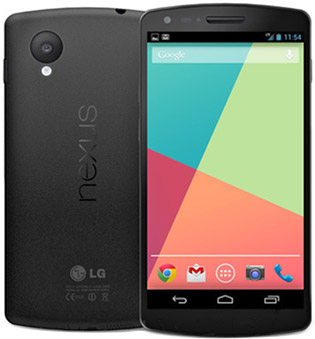 Android 4.3 Jelly Bean,
Google is amending its usual dessert-themed OS trend by introducing
Android 4.4 KitKat. Known internally at Google HQ as Key Lime Pie, the
Android 4.4 KitKat release date is tipped for launch on October 14,
possibly alongside the much-rumoured Google Nexus 5.
Android 4.3 Jelly Bean,
Google is amending its usual dessert-themed OS trend by introducing
Android 4.4 KitKat. Known internally at Google HQ as Key Lime Pie, the
Android 4.4 KitKat release date is tipped for launch on October 14,
possibly alongside the much-rumoured Google Nexus 5.












































